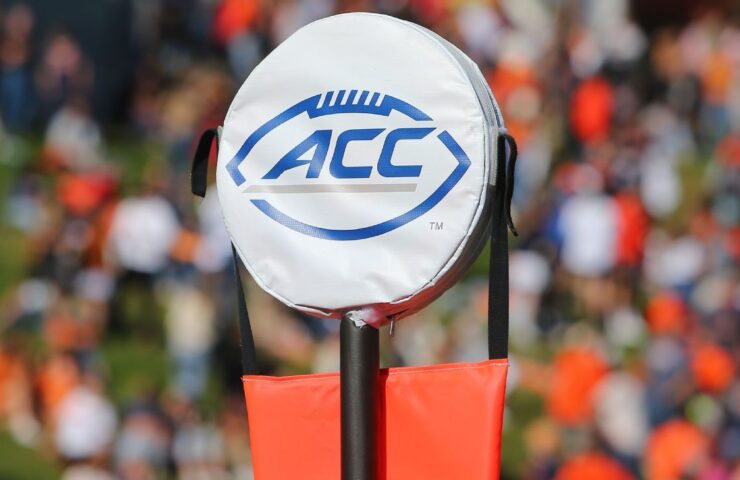
ACC officials lean into ‘success initiatives’ model
-
David Hale Close David Hale ESPN Personnel Author ACC reporter.Joined ESPN in 2012. Graduate of the University of Delaware.Andrea Adelson Close
- Andrea Adelson ESPN Elder Author ACC reporter. Joined ESPN.com in 2010. Graduate of the University of Florida.May 16, 2023, 07:34 PM ET AMELIA ISLAND, Fla.
— Amid increasing outcry over the league
- ‘s future, the ACC seems nearing a new agreement on
- earnings distribution that could provide some budget
relief for top programs.The league’s athletic directors left a 2nd day of occasionally controversial meetings feeling optimistic that schools would coalesce around a strategy that would pay for a bigger share of postseason revenue– consisting of from a soon-to-expand College Football Playoff– to the teams participating in those postseason games rather than dividing it similarly among all members.While there are a number of designs still on the table for what league authorities are calling “success initiatives, “Florida State athletic director Michael Alford stated there are scenarios in which a team making the College Football Playoff could add more than$10 million
in income annually.That monetary bump could assist assuage issues that Alford raised to his own board of trustees in February, when he said the revenue gap with the SEC could present an existential crisis for Florida State that would potentially require the school to search for an escape of their grant of rights agreement.Editor’s Picks 2 Associated”The
ADs and the universities are extremely combined,”Alford said.”So we’re thrilled about being in this league, and we wish to stay in it.” The ACC’s yearly spring meetings started Monday amid reports that 7 schools had lawyers take a look at the league’s grant of rights, which assigns each group’s broadcast rights to the league through the year 2036, and had discussed potential exit strategies.Those reports were met
with extreme aggravation inside the AD’s meeting room, with multiple members confessing to raised voices and a few blasphemies exchanged that Miami’s Dan Radakovich chalked up as”an airing of grievances.””People needed to state where they were and why do you feel that method, “Radakovich said.In the end, however, those aggravations helped to clarify the major issues that Alford, Radakovich and others have over the league’s future, given a massive profits gap with the Big Ten and SEC that jobs to be as much as$ 40 million annually in the coming years.Alford said Tuesday’s conversations were”as open and transparent”as he ‘d experienced, and he believed the progress might mollify the larger profits concerns for the foreseeable future.The discussion of potential departures was”most likely overblown, “Alford stated, with a number of other athletic directors, including at schools rumored to be amongst those looking for an exit, stating the reports were not substantive. “Everyone has taken a look at the grant of rights, “one athletic director stated.” You ‘d be insane not to. However no one is going anywhere.”To leave the ACC, a school would require to pay an exit cost of three times its annual income(around$120 million )and would run the risk of losing the right to broadcast their games due to the fact that of the grant of rights. It’s a possibility schools have gone over, Radakovich said, however not one anybody aspires to carry out.”The ADs and the universities are extremely unified. So we’re thrilled about being in this league, and we want to stay in it.
” Florida State athletic director Michael Alford “Trying to keep things the exact same isn’t going to work, “he stated, “however moving away is pricey and tough. Sure, they could pay the$120 million and prosecute the other piece. But where does that put them? Where does it put anybody? It’s difficult.
We don’t have an answer yet. So I believe it’s better to all enter into a room and discuss it.”The ACC has yet to report its 2021-22 profits circulation, but numerous ADs said they expected about$43 million per team. When the Big Ten’s brand-new$7 billion TV offer begins in July, groups are likely to receive in excess of$70 million yearly. The SEC’s distribution would similarly exceed the ACC’s.”We have this space, and the gap is simply not about the money, “Radakovich stated.” It has to do with schools being able to take those dollars and equate it into possibly NIL chances for student athletes. So ignore the fact that you may go and steal a coach if you have more cash. Now it’s going to get much better players. That’s where the rubber strikes the road.”The new revenue circulation designs would not impact TV profits, that makes up about 75%of the ACC’s circulation– something Alford said he hopes the league will return to talking about in the future. He has recommended that Florida State’s brand name worth for tv far exceeds most other ACC schools and that the league need to consider giving a larger piece of that earnings to the leading brands. Under the models being discussed this week, Alford stated, no school would remain in position to earn less in 2023-24 than it carried out in 2022-23. Alford stated he doesn’t believe the brand-new success initiatives would completely treat the profits concerns dealt with by the league, however it would allow top programs like Florida State to
stay competitive for championship games.”We simply need to be in a competitive boat, “Alford stated. “We’re the third-best media arrangement today. We wish to remain the third best. We need to be able to complete. As long as we’re there and competitive, that’s what the number is.”
- Andrea Adelson ESPN Elder Author ACC reporter. Joined ESPN.com in 2010. Graduate of the University of Florida.May 16, 2023, 07:34 PM ET AMELIA ISLAND, Fla.
